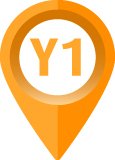Science
Science Statement of INTENTWhy do we teach this? Why do we teach it in the way we do? At Spire Nursery and Infant School, we recognise the importance of science in every aspect of daily life. As one of the core subjects taught in primary schools, we give the teaching and learning of science the prominence it requires. The scientific area of learning is concerned with increasing pupils’ knowledge and understanding of our world, and with developing skills associated with science as a process of enquiry. It will develop the natural curiosity of the child, encourage respect for living organisms and the physical environment and provide opportunities for critical evaluation of evidence. We endeavour to ensure that the science curriculum we provide will give children the confidence and motivation to continue to further develop their skills into the next stage of their education and life experiences. We consider and use ‘Science Capital’ as a conceptual tool to help develop our pupils’ aspirations and involvement in science. Moreover, we aim to prepare our pupils for life in an increasingly scientific and technological world. We intend learning in science to be through systematic investigations of aspects of their lives that rely mainly on first hand experiences, leading to them being equipped to answer scientific questions about the world around them. At Spire, our aim is to implement this INTENT through quality first Teaching & Learning. |
 |
|
 |
|
|
|
|
|
|
|
Curriculum Progression Map
Knowledge and Skills Progression
Barriers to Learning
Science Policy







